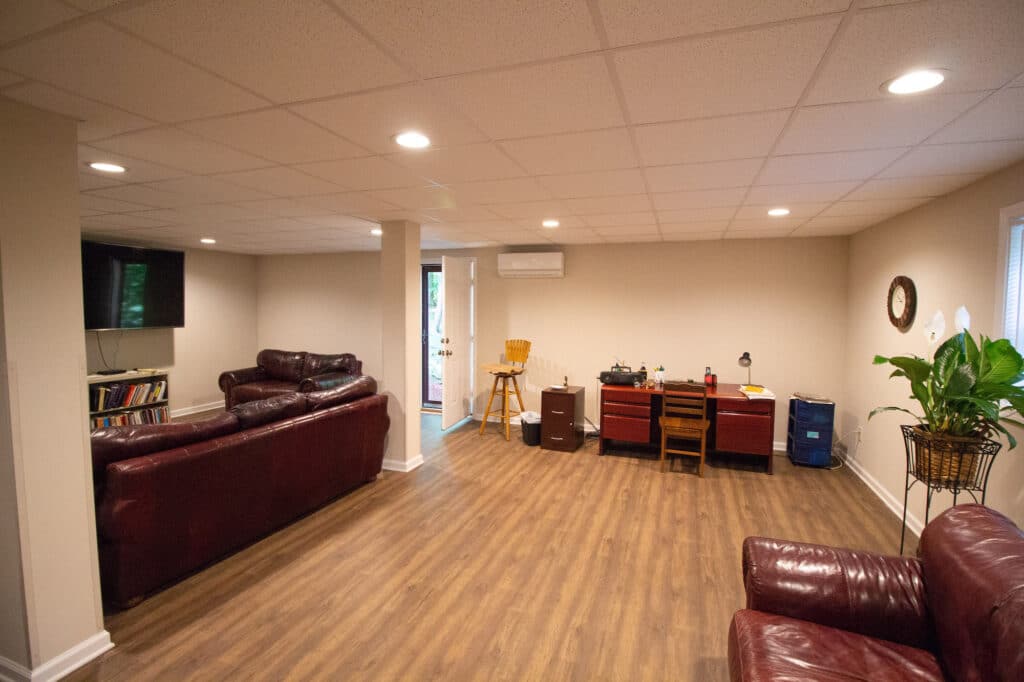Is a mini-split system the HVAC solution for you?
Don’t be deceived by its insubstantial sounding name – when it comes to heating and cooling, a mini-split unit packs a big punch that comes with significant savings on home energy costs.
What is a mini-split?
Even if you haven’t heard much about mini-split systems, you’ve likely seen them and felt them in action. “Mini-split” is shorthand for a ductless, smaller version of a central air conditioning system. Mini-splits have many potential applications and are most widely used in residential or commercial room additions, basements and apartment complexes. They also are popular retro fits for homes with non-ducted heating systems, such as hydronic (hot water), radiant panels, and space heaters.
Mini-splits, like central air systems, have two primary components: an outdoor compressor/condenser and an indoor air-handling unit, also known as an evaporator. Unlike central air conditioning and heating, you can control the temperature of individual rooms where they are installed.
Even if heating and cooling multiple rooms, incorporating a multi-split should be taken into consideration. Both mini-split and multi-split air conditioners can heat and cool multiple areas of a home. A multi-split is one type of mini-split system that allows zoning capability and setting different temperatures for different rooms without having multiple systems.
With a mini-split system, only one temperature zone can be regulated and is applied to all rooms in the zone. The following advantages and disadvantages cover the overall category of mini-split systems and includes both mini and multi-splits. Always remember, an experienced contractor or design/build specialist can help you choose the right solution for your project.
Advantages
The ability to control the temperature of individual rooms and spaces in your home or business will lead to enhanced personal comfort of more people at any given time. It also means increased energy savings.
Think about it – if you’re only needing to heat and cool the rooms where you are or where you spend the majority of your time, you’re not “wasting” energy by pushing air to all areas of your home that are not currently in use. Many systems also have timers, which means you can set it to start cooling before you get home or begin heating a few minutes before your morning alarm wakes you in the middle of winter. Savings, however, go beyond individual thermostats for certain rooms or zones in your home.
Mini-split systems also prevent energy loss associated with ductwork of central forced air systems. According to energy.gov, losses via ducts can account for more than 30% of energy consumption, especially if the ducts are in unheated or cooled areas such as an attic or unfinished basement.
Installing a mini-split also has advantages when it comes to interior design. Since the air handlers are generally just 7 to 10 inches deep, mini-splits offer flexibility when it comes to placement. The unit can be installed into the wall, suspended from the ceiling or even stand on the floor, depending on the model you choose. Most come with a remote control, so you’re able to change the settings with a few easy button pushes, no matter where it’s installed.
Disadvantages
Though we are fans of mini-split systems due to their versatility and energy efficiency, they may not be a fit for everyone. For homes with extensive ductwork, it may make more sense to expand the existing forced/central HVAC system when you remodel. A cost-benefit analysis may make sense when considering this decision for your home.
While mini-split systems will provide substantial savings in energy costs over time, the upfront pricing can be prohibitive, particularly if you are looking at using multiple units throughout the home or business, or using them to heat/cool large areas. Cost per ton of cooling capacity is about 30% more than central HVAC (not including ductwork) and about twice as much as a window unit with similar capacity.
And finally, some homeowners just don’t like the look of mini-splits. Though newer models are quiet, sleek and have modest profiles, some people say the aesthetics of the units don’t mesh with a particular design vision or the feel they want to evoke in a particular room.
Other considerations
At Tracy Tesmer Design/Remodeling, we are experienced when it comes to incorporating mini-splits into room design, as well as another important area – installation. Correctly sizing and placing the indoor portion of the unit is crucial when it comes to temperature and humidity control, as well as costs. A system that is too large will cost you more in upfront and long-term costs. Make sure you hire experience when renovating your home or business.
Are you thinking about a remodel or addition and wondering how a mini-split or multi-split HVAC system might fit in? Contact us today and one of our experienced design-build professionals will be happy to assist you!

